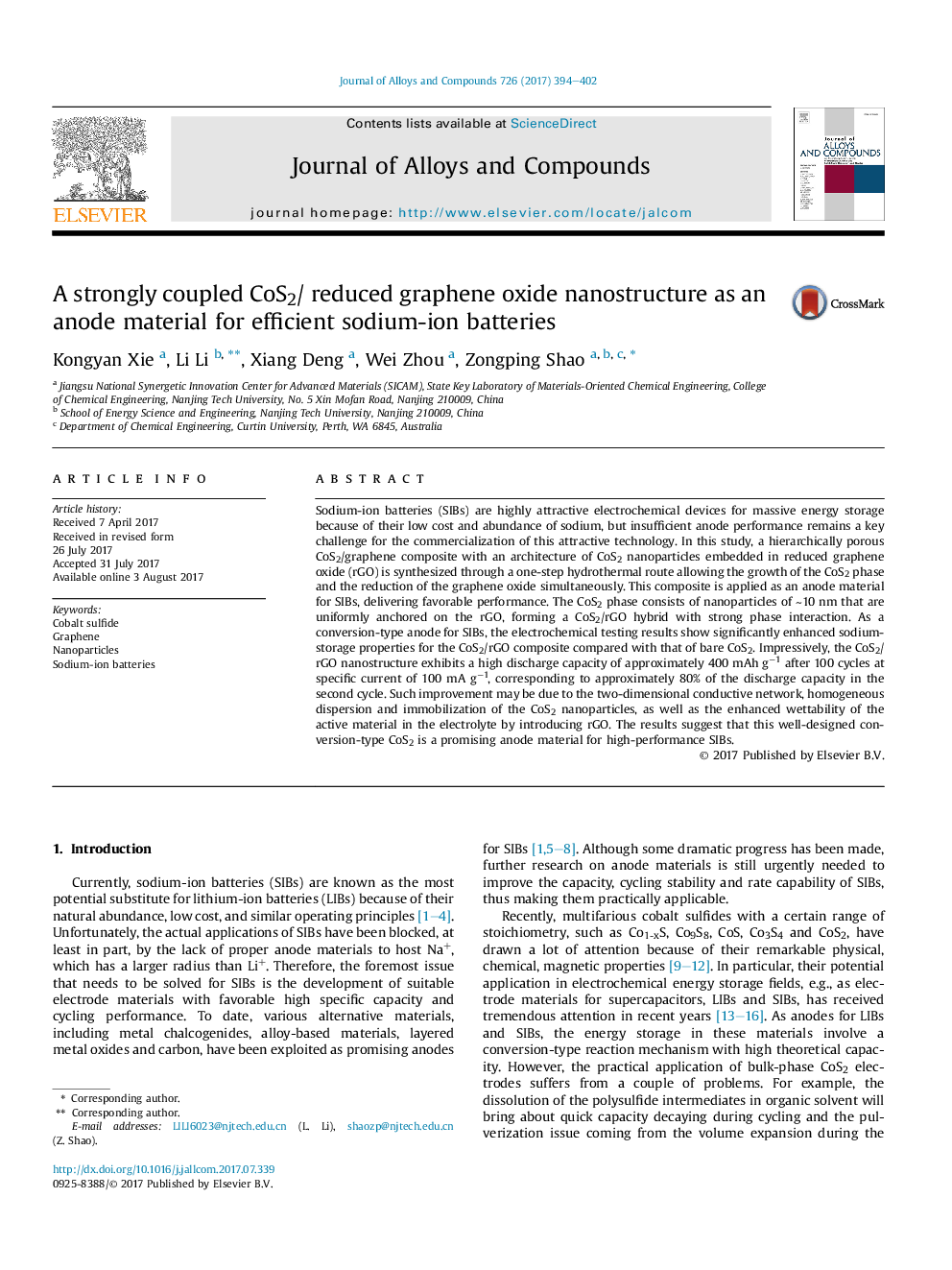| Article ID | Journal | Published Year | Pages | File Type |
|---|---|---|---|---|
| 5459362 | Journal of Alloys and Compounds | 2017 | 9 Pages |
Abstract
Sodium-ion batteries (SIBs) are highly attractive electrochemical devices for massive energy storage because of their low cost and abundance of sodium, but insufficient anode performance remains a key challenge for the commercialization of this attractive technology. In this study, a hierarchically porous CoS2/graphene composite with an architecture of CoS2 nanoparticles embedded in reduced graphene oxide (rGO) is synthesized through a one-step hydrothermal route allowing the growth of the CoS2 phase and the reduction of the graphene oxide simultaneously. This composite is applied as an anode material for SIBs, delivering favorable performance. The CoS2 phase consists of nanoparticles of â¼10Â nm that are uniformly anchored on the rGO, forming a CoS2/rGO hybrid with strong phase interaction. As a conversion-type anode for SIBs, the electrochemical testing results show significantly enhanced sodium-storage properties for the CoS2/rGO composite compared with that of bare CoS2. Impressively, the CoS2/rGO nanostructure exhibits a high discharge capacity of approximately 400Â mAh gâ1 after 100 cycles at specific current of 100Â mAÂ gâ1, corresponding to approximately 80% of the discharge capacity in the second cycle. Such improvement may be due to the two-dimensional conductive network, homogeneous dispersion and immobilization of the CoS2 nanoparticles, as well as the enhanced wettability of the active material in the electrolyte by introducing rGO. The results suggest that this well-designed conversion-type CoS2 is a promising anode material for high-performance SIBs.
Related Topics
Physical Sciences and Engineering
Materials Science
Metals and Alloys
Authors
Kongyan Xie, Li Li, Xiang Deng, Wei Zhou, Zongping Shao,
